The Mathematics Behind Tiling: Theory and Application

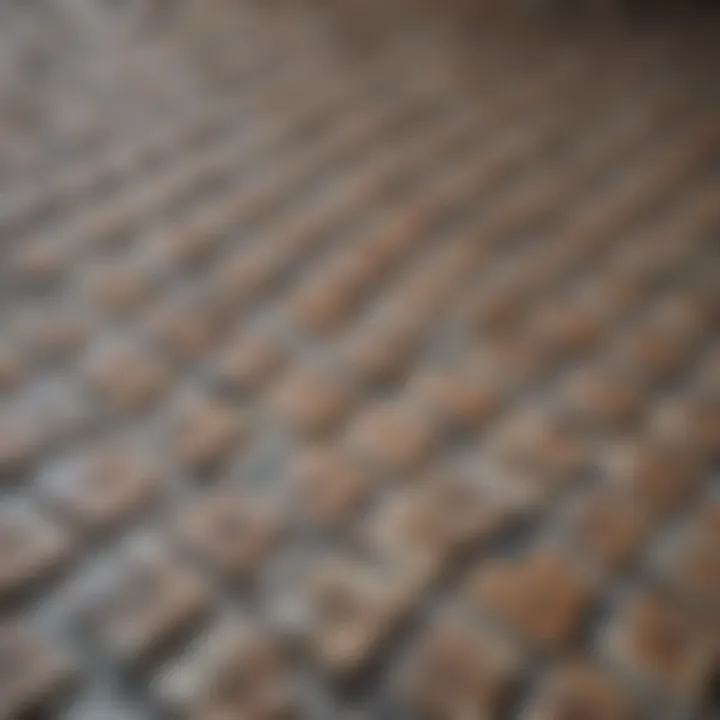
Intro
The art and science of tiling might seem like a simple matter of placing one tile next to another, but it goes way deeper than that. The patterns created by these tiles can lead us down intricate pathways of mathematical thought, offering insights that are both theoretical and practical. From the design of a cathedral to a modern art piece, the mathematics involved underpins many aspects of our lives. Understanding this relationship between mathematics and tiling allows us to appreciate not just designs, but also the fundamental principles that govern them.
Key Research Findings
Overview of Recent Discoveries
Recent research in the field of mathematics, particularly in relation to tiling, has revealed a wealth of interesting phenomena. For instance, the exploration of non-periodic tilings, such as those exemplified by Roger Penrose’s work, has allowed mathematicians to illustrate how complex structures can emerge from simple rules. Such findings are not just theoretical; they offer practical applications in various fields like materials science and architectural design.
In addition, advancements in computational geometry have empowered researchers to analyze tiling patterns using sophisticated algorithms, which were once only theoretical discussions. This includes models that facilitate the creation of unique tiling arrangements and automatically generate aesthetically pleasing designs based on certain mathematical principles.
Significance of Findings in the Field
These remarkable discoveries challenge traditional notions of symmetry and predictability within mathematical tiling. The implications of understanding these patterns stretch across multiple disciplines:
- Architecture: Designers are now using advanced tiling algorithms to create resilient structures that withstand environmental pressures while still appearing visually striking.
- Art: Artists incorporate non-repeating patterns into their works, resulting in innovative pieces that engage viewers on both an aesthetic and intellectual level.
- Science: Tiling concepts are applied in fields like physics, where researchers study fundamental properties of materials at microscopic levels, revealing how tiling can help to explain complex phenomena.
"Understanding tiling is not just about filling space; it’s about exploring the invisible relationships that guide our world.”
Breakdown of Complex Concepts
Simplification of Advanced Theories
Diving into some of the ocmplex theories can seem daunting, but simplifying them helps us grasp their roots. For example, the concept of tiling can be broken down into fundamental components:
- Basic Units: The smallest unit, or tile, can be considered a building block.
- Placement Rules: How these tiles fit together determines the overall pattern.
- Transformations: Reflections, rotations, and translations lead to variations of the main design without altering the core idea.
Visual Aids and Infographics
Visual aids play a critical role in comprehending advanced tiling principles. Diagrams showing how tiles interact can clarify how certain arrangements are created. Here’s an example of a tile transformation:
The above simplifies the concept of rotation and mirroring tiles. This allows for a more intuitive understanding of how complex tiling patterns are generated by applying basic mathematical concepts.
By presenting the information clearly and systematically, the mathematics of tiling can be made accessible to a wider audience, sparking interest and encouraging further research.
Preamble to Tiling Mathematics
Tiling mathematics serves as a fascinating bridge between abstract mathematical theory and practical applications seen in everyday life. It encompasses a variety of concepts that touch upon geometry, symmetry, and the visual arts, showcasing the intricate patterns that can emerge from simple geometric shapes. Understanding this topic not only enriches one’s grasp of mathematical principles but also unveils its implications in art and architecture, making it remarkably relevant in modern contexts.
Definition of Tiling
Tiling can be defined as the process of covering a surface with one or more geometric shapes, with no overlaps or gaps between them. Essentially, it’s about arranging these shapes efficiently to fill a space, whether that space be a floor, a wall, or even more complex surfaces. The shapes used in tiling are referred to as tiles, and they can be anything from squares and triangles to more complex polygons. What’s particularly intriguing is how simple geometric concepts can be mixed and matched to produce an assortment of patterns and designs, turning an ordinary area into an extraordinary one.
Historical Context
The history of tiling stretches back centuries, with evidence of tiled surfaces appearing in ancient civilizations. The Egyptians, for instance, utilized mosaic tiling in their elaborate tombs to symbolize the afterlife. Similarly, the Romans were known for their intricate tile work, showcasing geometric patterns in their villas.
In more modern times, mathematicians began exploring the properties of tiling and tessellations, shaping the foundations of this art into a formal study. Artists like M.C. Escher took tiling to a whole new level, using mathematical principles to create visually stunning pieces that challenge our perception of space and form. This historical context showcases not only the aesthetic value of tiling but also how mathematics can intersect with art.
Importance in Modern Mathematics
In today’s world, the importance of tiling in mathematics cannot be overstated. It has become a crucial aspect of various branches, including topology and fractals. Additionally, the study of tiling contributes to fields ranging from computer graphics and architecture to biology, where patterns in nature often mirror mathematical principles.
"Tiling mathematics does not just belong in books; it is alive and kicking in the world around us."
The exploration of symmetrical patterns, for instance, leads to a richer understanding of geometry and spatial reasoning, skills that are invaluable in various scientific domains. Furthermore, the processes of constructing tiling can also lead to innovative approaches in algorithm design in computing, highlighting how seemingly abstract mathematical concepts translate into real-world solutions.
In essence, the study of tiling serves not just as an academic pursuit but as a testament to how mathematical patterns can shape our understanding of the world.
Mathematical Foundations of Tiling
The mathematical foundations of tiling provide a robust framework for understanding how various shapes can fit together to cover a surface without any gaps or overlaps. This is more than mere aesthetic appeal; it’s underpinned by an intricate web of calculations and concepts that are essential not just in mathematics, but in a variety of practical applications ranging from architecture to computer graphics.
By delving into the foundational aspects of tiling, we can appreciate the underlying principles that govern this field. This understanding serves not only academic pursuits but also real-world applications, unlocking innovative solutions in design and spatial arrangements. As we unpack these mathematical principles, the role of geometric shapes and the nuances of area calculations will be highlighted, each contributing significantly to the art and science of tiling.
Basic Concepts
Geometric Shapes
Geometric shapes form the backbone of any tiling project. Ranging from simple squares and triangles to more complex polygons, each shape possesses distinctive characteristics that dictate how they will tessellate, or repeat, across a surface. One particular feature of geometric shapes is their ability to fill space effectively. For example, the perfect square is a natural choice because of its equal sides and angles, making it easy to compute area and assess fit within a given space.
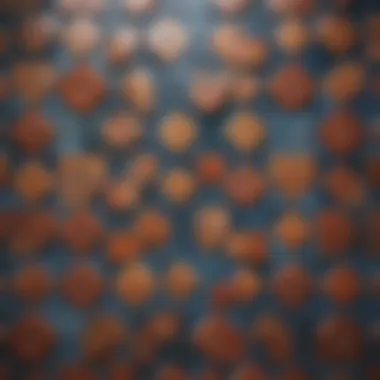
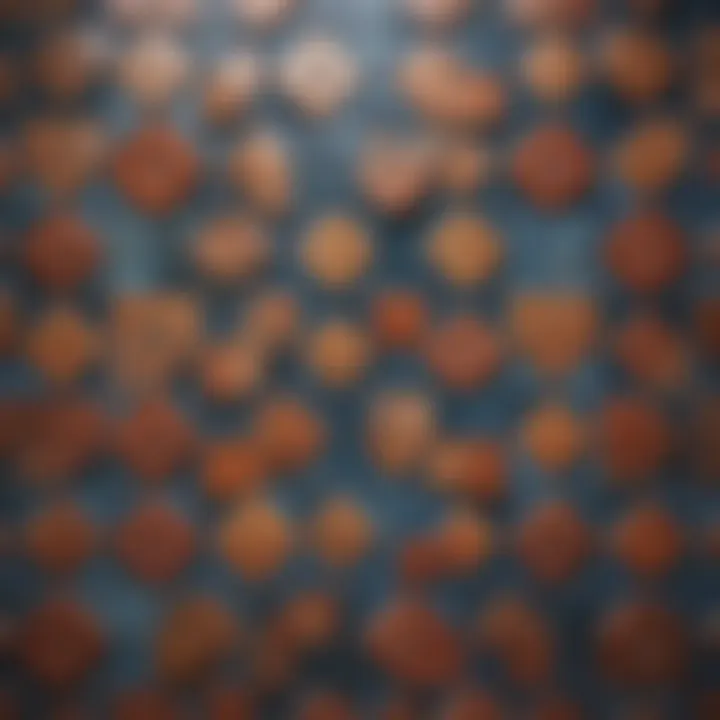
However, the uniqueness of other shapes, such as hexagons or pentagons, can introduce options that are visually captivating, allowing for a rich diversity in design while still maintaining functionality. Choosing the right geometric shape is crucial not only for mathematical precision but also for achieving the desired aesthetic in tiling compositions. It’s about balancing mathematical rigor with artistic flair.
Area Calculations
Area calculations are another fundamental aspect that underpins the mathematics of tiling. Understanding how to calculate the area of different shapes allows designers and architects to determine how many tiles are necessary to cover a given surface. The key characteristic of area calculations is its direct relevance to both cost efficiency and material usage. Knowing the area of individual tiles enables one to easily compute how many tiles are needed, thus reducing waste and optimizing budgets.
The unique feature of area calculations lies in their applicability across different geometric shapes, each coming with its own formula. Rectangles are calculated with the simple formula of length times width, while circles are computed using pi times the radius squared. This versatility makes area calculations a popular subject in the study of tiling. However, one must also consider potential challenges such as irregular shapes, which could complicate calculations and necessitate more advanced methods or approximations.
Tiling Equations
Tiling equations are mathematical expressions that describe how tiles relate to each other within a given space. These equations can range from simple linear equations to complex functions involving variables that represent tile dimensions, angles, and positions. By solving these equations, one can determine the specific placements and orientations necessary for successful tiling arrangements, thus ensuring an efficient use of materials and precise installations.
Pattern Formation
Periodic vs. Aperiodic Patterns
When discussing pattern formation in tiling, a distinction must be made between periodic and aperiodic patterns. Periodic patterns repeat in a predictable manner, such as the classic checkerboard pattern, while aperiodic patterns do not exhibit any regular repetition, often resulting in unique and complex designs. Understanding these patterns is essential for both mathematical inquiries and practical applications, like designing tile layouts that minimize waste or showcase artistic intent. The benefit of knowing when to utilize periodic versus aperiodic patterns can lead to innovative and appealing tiling solutions.
Coloring and Symmetry
Another interesting aspect of tiling involves coloring and symmetry. Proper coloring can enhance visual interest and create symmetry in tiling patterns. For example, when tiles are arranged with an attention to color transitions, it can articulate beautiful aesthetic effects that resonate in design work. Moreover, the concept of symmetry—whether rotational or reflective—establishes a layer of sophistication to tiling. Utilizing symmetry can lead to stunning visual coherence that aligns with both mathematical principles and artistic expression.
Key Insight: Understanding geometric shapes, area calculations, tiling equations, and patterns can transform the mundane act of applying tiles into a sophisticated melding of art and mathematics.
Types of Tiling
The study of tiling is not merely a mathematical curiosity; it touches upon many aspects of our world and daily life. Understanding the various types of tiling provides valuable insights into how space can be efficiently and artistically filled. Each type has its own characteristics, uses, and aesthetic appeal, playing a crucial role in architecture, art, and natural formations. Here, we will delve into three primary categories of tiling: regular, semi-regular, and irregular.
Regular Tilings
Regular tilings are the simplest and most harmonious forms of tiling. Defined by identical shapes that fill a plane without any gaps or overlaps, these tilings are based on regular polygons. Common examples are the square tiling, triangular tiling, and hexagonal tiling. The importance of regular tilings lies in their symmetry and predictability, which is a boon in fields like architecture and urban planning.
- Characteristics: Each tile is geometrically congruent to the others.
- Use Cases: Often found in floor designs or in natural formations like honeycombs.
- Mathematical Implications: Regular tilings are useful in understanding concepts like area calculation and geometric rotations.
It's fascinating to realize that in a flat surface, there are only three regular tiling patterns: triangle, square, and hexagon. Each variation lends itself to unique perspectives, influencing everything from the layout of a city street to the design of M.C. Escher's artworks.
Semi-Regular Tilings
Moving to semi-regular tilings, these patterns introduce a delightful complexity. Unlike regular tilings, semi-regular tilings combine two or more different types of polygons, arranged in such a way that every vertex has the same arrangement of tiles. An example is the combination of squares and octagons, which creates a visually striking design.
- Benefits: Enhanced aesthetic appeal due to variety and complexity.
- Key Features: Semi-regular patterns often exhibit a sense of depth and richness that regular patterns lack.
- Applications: Widely used in decorative arts, tessellations, and more complex architectural designs.
Artists and architects have delved into these patterns, creating stunning realities that balance form and function. A good real-world illustration can be found in the intricate tilework of Islamic architecture, showcasing how semi-regular patterns can convey profound cultural narratives.
Irregular Tilings
Irregular tilings take creativity to a whole new level and can be defined as any tiling that does not fit the strict definitions of regular or semi-regular patterns. With no specific geometrical constraints, irregular tilings can vary widely and often consist of tiles that differ in shape, size, or orientation. This category includes a vast array of patterns, from a patchwork quilt to complex artworks.
- Characteristics: Greater freedom in design and layout, allowing for unique, non-repeating patterns.
- Considerations: While they can be aesthetically pleasing, irregular tilings can also lead to mathematical complexity, presenting challenges in calculating area or pattern recognition.
- Real-World Examples: Nature offers countless examples; consider the asymmetrical shapes of leaves, flower petals, and land formations.
Ultimately, the beauty of irregular tilings lies in their unpredictability, mirroring the chaotic elegance often found in nature. They encourage a departure from rigid mathematical constraints, fostering a freer expression of architectural and artistic forms.
"In every irregular tiling, we reveal a thread of creativity woven into the fabric of mathematics, showcasing that real beauty often exists outside the confines of order."
As we have examined, each type of tiling plays a significant role in our understanding and application of mathematical concepts. The journey through regular, semi-regular, and irregular patterns not only enriches our intellectual journey but also our appreciation of beauty in the world around us. This foundational understanding sets the stage for exploring deeper mathematical principles related to tiling.
Geometric Transformations in Tiling
Geometric transformations play a pivotal role in the mathematics of tiling, serving as the backbone for understanding how shapes can be manipulated and arranged. These transformations are not just academic; they provide the theoretical framework for practical applications in architecture, art, and even computer graphics. By exploring translation, rotation, and reflection, we gain essential insights into pattern formation and symmetry, highlighting their significance in both natural and human-made structures.
Translation
Translation is one of the simplest yet most powerful geometric transformations within tiling. It involves sliding a shape from one position to another without altering its orientation or size. This can be visualized in the mundane act of shifting tiles around in a pattern, where each tile remains unchanged in form but is repositioned to create a new arrangement.
In mathematical terms, if we have a point represented by coordinates (x, y), translating this point by a vector (a, b) results in a new position at (x + a, y + b).
Benefits of Translation:
- Maintains Structure: All properties of the geometric figure remain intact.
- Flexibility: It allows for versatile arrangements in designs and patterns.
- Foundation for Advanced Patterns: Many complex tilings can be constructed through repeated translations of basic shapes, contributing to both regular and semi-regular tilings.
Rotation
Rotation brings a refreshing twist to the concept of tiling by allowing shapes to spin around a fixed point, often referred to as the center of rotation. This can create dynamic and visually striking patterns. Unlike translation, which slides tiles, rotation changes their orientation, opening up a myriad of aesthetic possibilities.
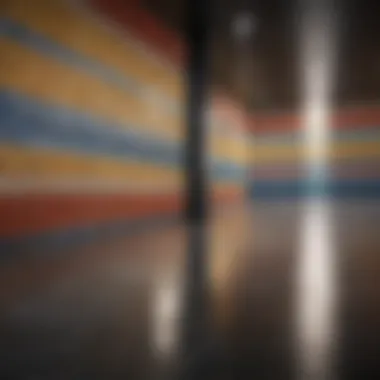
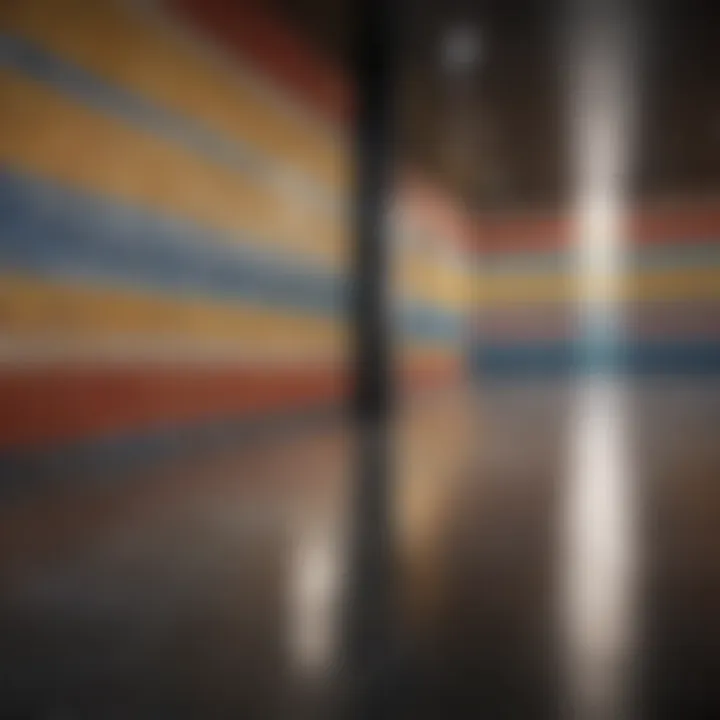
Typically, rotation is defined in degrees, with common rotation angles being 90°, 180°, and 270°. For instance, a square tile rotated by 90 degrees will simply align differently but still fit snugly with adjacent tiles.
"Rotation fosters creativity, adding an element of surprise to tiling patterns."
Considerations with Rotation:
- Symmetry and Aesthetic Appeal: Rotational symmetry often enhances the beauty of a tile pattern.
- Interlocking Designs: Certain tile configurations rely heavily on rotation to interlock smoothly, which can greatly influence both artistic and functional design in spaces like mosaics or pavements.
Reflection
Reflection introduces another layer of complexity to geometric transformations in tiling by flipping shapes across a particular line, known as the line of reflection. This transformation is akin to viewing a shape in a mirror, where the original and the reflected shapes are congruent yet oriented oppositely.
Reflections are key to achieving symmetry in designs. In tiling, they can create pleasing visual effects and intricate patterns that captivate the viewer. An example of this can be seen in traditional tessellations, where reflective patterns contribute to the overall composition.
Reflection in Tiling:
- Enhances Symmetry: Reflection creates balanced and harmonious designs, which are very compelling visually.
- Adds Variety: Using both reflections and rotations can lead to complex patterns that might be impossible with simple translations alone.
In sum, geometric transformations like translation, rotation, and reflection underpin the art and science of tiling. Each transformation not only serves a fundamental purpose but also enriches the creative possibilities, making it an area of great interest and importance for students, educators, and professionals alike. Understanding these transformations enhances not just the mathematical comprehension but also the aesthetic appreciation of tiling as a form of expression in various fields.
Practical Applications of Tiling
The realm of tiling mathematics extends far beyond mere theoretical constructs; it finds itself woven into the very fabric of various disciplines. From the grandeur of architectural wonders to the intricacies of digital art, understanding the practical applications of tiling is essential for anyone venturing into this field. Not only does tiling provide aesthetic appeal, but it also enhances functionality and efficiency in numerous applications. Let's delve into the vital roles of tiling in specific areas such as architecture, art, and computer graphics.
Architecture and Design
In architecture, tiling is more than just an element of decoration; it's a fundamental aspect that influences design and spatial aesthetics. Architects employ various tiling methods to achieve both harmony and structure in their designs. Consider the intricate mosaics of the ancient Romans or the angular, geometric patterns of Islamic architecture. Each serves a purpose that goes beyond visual delight, encapsulating cultural, historical, and symbolic significance.
Benefits of utilizing tiling in architecture include:
- Durability: Well-designed tiles can withstand time and elements, ensuring that buildings not only look great but also last longer.
- Thermal Efficiency: Some tiles, particularly those made from clay or stone, can help regulate temperature, contributing to energy-saving designs.
- Ease of Maintenance: Tiled surfaces are often simpler to clean and maintain, making them a practical choice in high-traffic areas.
For instance, when you walk into a contemporary office space, the sleek tiled floors can create a sense of professionalism, while textured wall tiles can encourage visual engagement. As architecture integrates more sustainable practices, the demand for innovative tiling solutions has surged, merging functionality with artistry.
Art and Aesthetics
Tiling takes center stage in the art world as well, serving not just as a foundation but as a canvas for creativity. Artists leverage geometric patterns and tiling techniques to create pieces that challenge perception and evoke emotions.
Take, for example, the works of M.C. Escher, whose explorative use of tessellations mesmerizes viewers. His ability to blend multiple dimensions through tiling showcases a deep understanding of mathematical principles while simultaneously delivering breathtaking visual experiences. Artists can manifest complex ideas by using:
- Tessellation Techniques: Utilizing shapes that fit together without gaps or overlaps, promoting a continuous flow of imagery.
- Color Theory: Employing color patterns in tiles to influence viewers' emotions and interpretations.
- Cultural Reflections: Engaging with traditional tiling styles from various cultures to reinterpret and modernize their significance.
In galleries, public spaces, and homes, tiling offers artists innovative mediums to express intricate concepts, pushing boundaries and inspiring dialogue through visual simplicity.
Computer Graphics and Animation
The digital landscape reaps substantial benefits from the principles of tiling mathematics. In computer graphics, tiling is utilized extensively to create textures and patterns that enhance visual realism. Artists and designers rely on digital tiling to form seamless backgrounds and intricate patterns without extensive memory usage.
In animation, tiling approaches allow for:
- Efficient Rendering: Tiling graphic elements enables smooth animation transitions without bogging down processing power.
- Dynamic Environments: By layering tiles in a grid, animators can create detailed, expansive landscapes that feel alive and immersive.
- Repetition Control: Designers can control how textures repeat and interact within a scene, exploring the limits of realism and stylization.
Overall, the evolution of tiling mathematics continues to redefine the boundaries of art, architecture, and digital technologies. It's fascinating to see how what began as simple mathematical principles evolves into significant real-world applications, reinforcing their relevance across various sectors. As we forge ahead, it's clear the impact of tiling mathematics will only broaden, introducing exciting opportunities for creativity and innovation.
"Tiling, in its many forms, transforms concepts into visual representations that resonate through architecture, art, and computation, embodying both utility and beauty."
Through these analyses of practical applications, one can understand that the interplay between mathematics and tiling is not merely academic; it profoundly influences our environments and experiences.
Tiling in Nature
Tiling in nature reflects a fascinating intersection where both form and function play significant roles. It’s not just an abstract concept found in textbooks—nature crafts intricate patterns and arrangements that maintain ecological balance and beauty. Understanding this connection enhances our comprehension of natural phenomena, inspires artistic expression, and even influences technological advancements. By diving into this topic, we can see how evolving structures adapt into intricate patterns akin to those created by mathematicians.
Biological Patterns
Biological patterns arise from complex interactions within ecosystems. Think of a honeycomb’s hexagonal structures—bees demonstrate exceptional efficiency through this geometrical precision. These hexagons minimize the amount of wax needed, showcasing how nature utilizes available resources effectively. Every cell mirrors this logical arrangement, optimizing the space while maximizing strength.
In biological systems, patterns are not merely aesthetic; they embody a wealth of evolutionary information.
Another impressive example lies in the arrangement of leaves on a plant stem. Known as phyllotaxis, this pattern enables optimal sunlight access and efficient water use. The mathematical concepts of angles and spirals govern these arrangements, as seen in sunflower heads or pine cones. So, the next time you gaze at a flower or tree, remember that even their layout is a symphony of mathematical principles.
Natural Crystals
Crystal structures provide another stunning perspective on tiling in nature. When minerals solidify under certain conditions, atoms arrange themselves into repetitive geometric shapes. This orderly patterning can be seen in the likes of quartz, larger and glistening— a testament to nature's ability to create stunning visual effects that follow specific mathematical rules.
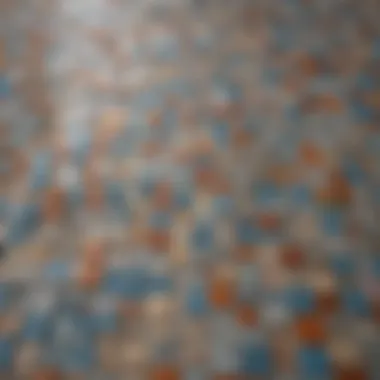
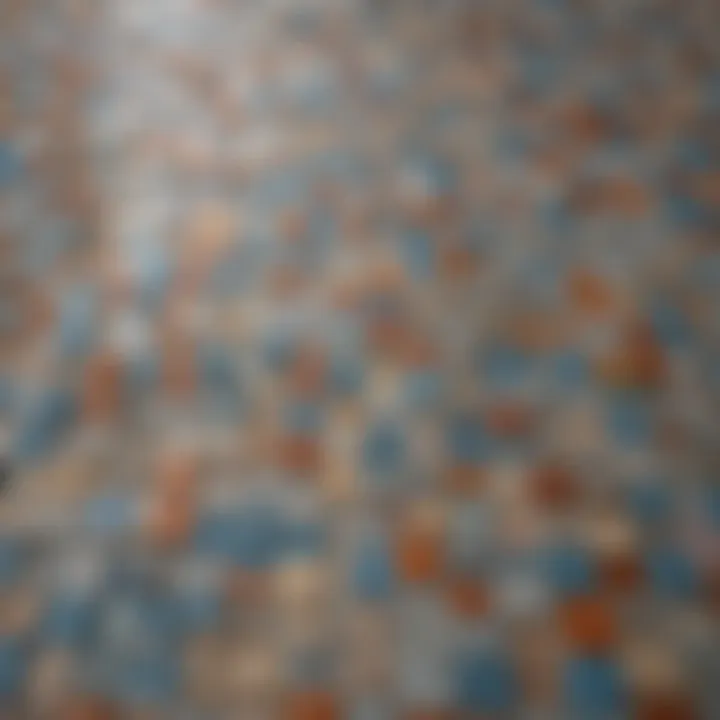
Crystals like these aren't just pretty to look at; their formation relies on consistent angles and sides, reflecting a deep-rooted order present in unconstrained environments. In fact, the structure of crystals can be described mathematically through lattice theory. The considerably different structures exhibit tiling properties that are deeply tied to the angles formed between the atomic bonds.
Additionally, the study of crystal lattices parallels discoveries in advanced tiling theories. For instance, non-Euclidean tiling offers a glimpse into how complex arrangements emerge, sometimes defying conventional geometry.
Understanding these patterns in nature not only enriches our knowledge of the living world but also contributes to multiple scientific fields, from biology to materials science. By recognizing the underlying mathematical frameworks, we gain insights that go well beyond the surface.
Advanced Tiling Theories
Advanced tiling theories represent an essential dimension of the mathematics of tiling, providing a deeper understanding of how geometric patterns come to life beyond basic constructs. While traditional tiling may focus on simple shapes and their arrangements, advanced theories delve into intricate geometries, unraveling the complex relationships that govern these patterns. In this section, we will explore two pivotal aspects: tessellations and non-Euclidean tiling, each bringing unique perspectives and applications to the field.
Tesselations
Tessellations, often referred to as tilings, consist of repeating patterns that cover a surface without gaps or overlaps. They are not just visually appealing; they are foundational in understanding spatial arrangements in both art and science.
Euler’s Theorem on Tesselations
Euler's Theorem on tessellations serves as a cornerstone in this realm. It succinctly computes the vertices, edges, and faces of convex polyhedra, describing a mathematical relationship that holds profound implications for tiling. The key characteristic of this theorem is its ability to simplify complex geometrical relationships into a single equation. For instance, if you think about a cube, this theorem states that the number of vertices (V), edges (E), and faces (F) satisfies the equation V - E + F = 2.
One of the significant benefits of Euler's Theorem in our context is how it provides a fundamental lens to view not just regular polyhedra but also the complex patterns in tessellations. Its unique feature lies in its applicability, extending beyond mere theory to real-world structures, making it a popular choice in explorations of mathematical models in architecture and art.
However, there are limitations. While it works seamlessly for convex shapes, it falls short when applying to non-convex forms, thus presenting challenges for certain tile arrangements. Despite this, it remains a pivotal concept enriching our understanding of tessellation mathematics.
Applications in Computational Geometry
Applications in computational geometry represent another frontier where advanced tiling theories flourish. This aspect investigates how algorithms are developed to understand and manipulate geometrical configurations efficiently. The primary characteristic here is the intersection of mathematics and computer science, by using computational techniques to solve geometric problems involved in tiling.
The elegance of this approach lies in its versatility, applicable in various fields ranging from computer graphics to geographic information systems (GIS). For example, algorithms can be designed for texture mapping in 3D modeling or optimizing paths in robotics by ensuring efficient space utilization through tile arrangements.
One unique feature of applications in computational geometry is their capacity to adapt and evolve as computational power advances. As algorithms improve, they allow for more intricate and complex arrangements of tiles, thus paving the way for innovations across technological domains. However, this fast pace sometimes makes it challenging to ensure mathematical rigor, which can be a drawback worth considering.
Non-Euclidean Tiling
Non-Euclidean tiling takes us into the realm of geometry that bends traditional rules, enabling fascinating explorations of space and patterns. Unlike conventional Euclidean tiling, which operates under familiar concepts of flat surfaces and angles, non-Euclidean tiling explores spherical and hyperbolic surfaces.
Here, we encounter extraordinary applications, such as in the design of certain architectural structures that challenge perceptions of space. Examples include domes or surfaces that curve in unexpected ways, requiring advanced understanding both mathematically and aesthetically. This type of tiling not only broadens the practical applications of mathematics but also encourages abstract thinking and creativity—a vital blend in today's interdisciplinary landscape.
In summary, advanced tiling theories offer a treasure trove of insights that elevate our comprehension of geometric arrangements. They bridge abstract mathematical concepts and practical applications, proving indispensable in both theoretical research and everyday application.
Research Directions in Tiling Mathematics
The field of tiling mathematics is vibrant and ever-evolving, reflecting not just the beauty of patterns but also the complexities inherent in mathematical relationships. This section explores the contemporary avenues of research and envisions the exciting landscapes that lie ahead in tiling mathematics. Understanding these directions is crucial, as they inform how mathematicians and practitioners apply theoretical constructs to solve real problems in various domains.
Current Studies and Findings
Research into tiling mathematics has seen significant advancements in recent years. Current studies delve deep into the fundamental properties of different types of tiling, particularly focusing on tessellations and aperiodic tilings. One prominent area of investigation revolves around the behavior of shapes in confined spaces, drawing connections between tiling and optimization problems.
For example, researchers are currently working on understanding how various geometric shapes tile planes without leaving any gaps or overlapping. One groundbreaking discovery is the ongoing work on Penrose tiling, known for its non-repeating patterns that still maintain an ordered structure. This research opens avenues for applications in quasicrystals and other advanced materials.
Another important line of inquiry addresses the computational aspects, with scholars developing algorithms that can automate the design of complex tiling patterns. The focus is often on efficiency and the potential application of these algorithms in computer graphics and architectural designs. The melding of art and precision here underlines the practical utility of mathematical abstraction.
Future Prospects
As research continues to unfold, the future of tiling mathematics appears ripe with possibilities. One thrilling prospect involves leveraging artificial intelligence to explore tiling in ways previously thought impossible. For instance, machine learning algorithms could analyze vast datasets of tiling patterns, discovering new types or optimizing existing patterns.
Moreover, interdisciplinary connections are likely to burgeon, merging insights from biology, computer science, and architecture with mathematical principles. Consider the potential insights that might emerge from studying patterns in nature, such as the hexagonal tiling found in beehives, and how these might inform engineered solutions in materials science or urban planning.
Also on the horizon is an increased focus on educational tools that engage the next generation of mathematicians. Using virtual reality (VR) and simulation technologies, students can experience the beauty of tiling mathematics firsthand, making abstract concepts tangible and enhancing learning outcomes.
“The elegance of tiling mathematics lies not only in its patterns but in the innovative solutions it promotes across disciplines.” - Anonymous Mathematician
In summary, the exploration of research directions in tiling mathematics reveals a tapestry woven from theory and application, past and future. Whether through computational advances or interdisciplinary approaches, the importance of this field extends well beyond abstract equations, impacting real-world scenarios in profound ways.
End
In wrapping up our exploration into the mathematics of tiling, it’s crucial to take a step back and reflect on the larger implications of this discipline. Tiling mathematics isn't just a niche area; it plays a foundational role across multiple fields. Its relevance goes beyond theoretical significance, illuminating practical applications that touch various aspects of everyday life.
Summary of Key Insights
Throughout this article, we navigated through various layers of tiling mathematics. Here are some key insights:
- Patterns and Symmetry: At the heart of tiling mathematics lies the study of patterns. These patterns do not only have aesthetic value but also provide insights into symmetry and geometric configuration.
- Real-World Applications: From stunning mosaic designs in architecture to intricate algorithms in computer graphics, tiles find their applications in numerous areas. The examples underscore that mathematics isn’t merely an abstract pursuit but rather a robust tool to tackle real-world problems.
- Emerging Theories: The discussion surrounding advanced theories—like tessellations and non-Euclidean tiling—reveals an evolving landscape, suggesting that there’s much more to be discovered and explored.
The Significance of Tiling Mathematics
The importance of tiling mathematics stretches far and wide. It provides a framework for understanding complex geometric relationships. By studying tilings, we gain valuable insights into:
- Design and Artistry: Tiling underpins various artistic expressions. Whether in architecture or fine arts, understanding geometry is crucial to producing harmonious and meaningful designs.
- Scientific Inquiry: Fields such as biology and crystallography use tiling concepts to explain patterns found in nature, offering interdisciplinary connections that enrich both scientific and mathematical knowledge.
- Problem Solving: The mathematical principles behind tiling assist in developing problem-solving strategies that can be applied to architecture, engineering, and other technical fields.
"The beauty of tiling mathematics lies in its applicability; it effortlessly bridges the gap between abstract ideas and tangible creations."
In closing, tiling mathematics is not merely a study of shapes and patterns; it is a profound exploration of structure and beauty that allows us to understand and engage with the world around us. The insights from this rich field have the potential to inspire future innovations and continue advancing our knowledge across varied domains.















